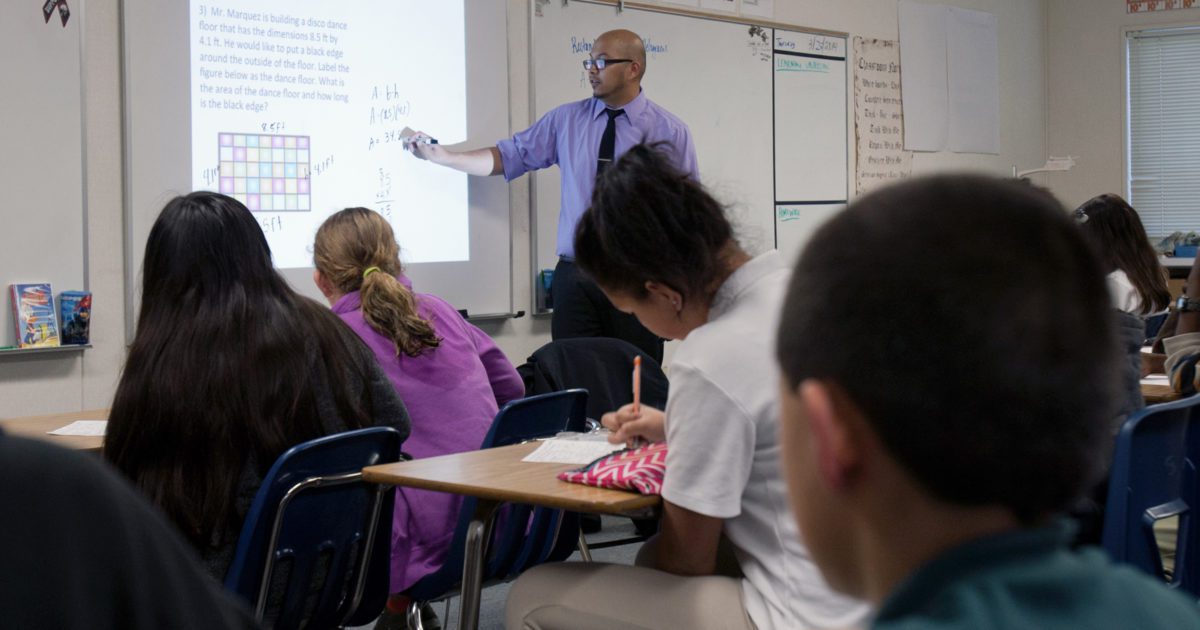
As Silicon Valley teachers stress over the lack of affordable housing and high cost of living, unruly student behavior is now part of the mix. The end result is teacher burnout.
Nearly one-third of teachers cite student discipline as the worst part of the job, according to a recent UCLA study. The problem is being attributed to staffing shortages in classrooms and the need for expanded mental health services, advocates said.
In the UCLA study of educators planning to quit the teaching profession, 66% said better discipline policies would increase teacher retention. Of teachers considering leaving the profession, 57% cite burnout as their top reason, with student behavioral issues as a contributing factor. The study surveyed 4,632 California teachers in collaboration with the California Teachers Association.
Since schools have returned to in-person learning, districts have seen an increase in problematic student behavior—resulting in suspensions, expulsions and referrals to the principal’s office, teachers said.
Even with a significant reduction in COVID-19 protocols this school year, students are still experiencing mental health impacts that can manifest in disruptive classroom behavior, said Patrick Bernhardt, president of the San Jose Teachers Association. More students are skipping class, with chronic absenteeism rates reaching as high as 25% during the pandemic. The reasoning behind it is still unclear, San Jose educators said.
“We know that there were many families that experienced great trauma, whether it be loss of family members or job losses or housing uncertainty,” Bernhardt told San José Spotlight. “What we need to do is focus on how do we stop these (behaviors) from recurring? That’s what’s really driving people to think about changing jobs.”
It doesn’t take much to turn a classroom upside down, said Perri Sweet, an English teacher at Dartmouth Middle School. Reminders to keep masks on and students disrupting class time by doing TikTok challenges were all part of a post-pandemic school day last school year, she said. One 50-minute class period can be thrown entirely off course if one student does something small like repeatedly calling out to another classmate and refusing to stop, she said.
“Right now it’s one of the hardest jobs in the world,” Sweet told San José Spotlight. “I’ve put so much love and work and time into this job: I refuse to leave demoralized.”
With more than two decades of teaching under her belt, Sweet said the previous school year went down as one of her worst years for student behavior.
Dealing with student discipline on a day-to-day basis contributes to burnout, said Kai Mathews, project director at the UCLA Center for the Transformation of Schools, and one of the study’s authors. The pandemic precautions meant teachers were responsible for keeping students safe while also juggling their curriculum. Students were also less likely to understand what behavior was expected after more than a year of virtual learning, she added.
“Teachers had to become… an enforcer for the mask, for you staying six feet apart from your partner, for you not sharing pencils,” Mathews told San José Spotlight. “Imagine doing that for 30 fourth graders.”
Widespread staffing shortages, from substitute teachers to bus drivers, means teachers are dealing with student discipline on their own, said Suzanne Lima, president of the Evergreen Teachers Association. Districts had to turn to mental health counselors to act as substitute teachers, which exacerbated the lack of services necessary to address a student’s emotional needs.
“If teachers had more support, and if we had more resources… that would help with teacher burnout,” Lima told San José Spotlight. “It feels like sometimes you’re just alone, dealing with it in your classroom.”
Jack Hamner, president of the East Side Teachers Association, said teachers need to have a voice at the table when discussing student discipline. Schools are working toward non-punitive discipline, but educators have little guidance on how to handle certain behaviors or students without resorting to referrals or suspensions.
“When (teachers) have discipline issues, whether they’re big or small, they want to feel that the administration and the district are supporting them in moving forward and trying to eliminate those issues,” Hamner said.
Improving student behavior is a collaborative process that involves teachers, parents and administrators, Sweet said. For now, she isn’t planning to quit.
“They’re not bad kids,” Sweet told San José Spotlight. “They’re having a bad moment.”
Contact Loan-Anh Pham at [email protected] or follow @theLoanAnhLede on Twitter.
"behavior" - Google News
October 31, 2022 at 10:35PM
https://ift.tt/DSh1Zyx
Silicon Valley teachers burned out by unruly behavior - San José Spotlight - San José Spotlight
"behavior" - Google News
https://ift.tt/xAyJ6ft
Bagikan Berita Ini














0 Response to "Silicon Valley teachers burned out by unruly behavior - San José Spotlight - San José Spotlight"
Post a Comment